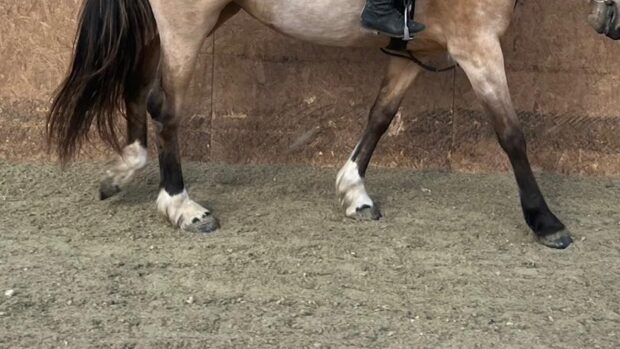Research and clinical experience have shown that suspensory ligament injuries, particularly in the hindlimbs, are the highest injury risk in horses doing dressage — at all levels.
The exact cause of injury is not totally clear, but it is likely that a number of things contribute.
Dressage-specific paces or movements could be risk factors, as could the type of horse used.
The repetitive nature of dressage training might mean that the influence of these risk factors is exacerbated — just as human athletes specialising in a particular sport are prone to repetitive strain injury.
Factors that increase the strain placed on the suspensory ligaments are generally associated with an increase in fetlock extension or hyperextension (beyond the normal range of motion).
Excessive exposure to these factors is likely to result in ligament overstrain and injury.
Clinical review suggests that conformation could play a part. Injury is more likely to occur if the horse has a straight hock and a dropped fetlock, probably because he is more likely to hyperextend the fetlock during normal locomotion.
Increasingly, we’re selecting dressage horses with extravagant, uphill movement to get higher scores in competition. Desirable as these qualities may be in the arena, they’ve been identified as factors that increase strain placed on the suspensory ligaments.
How can you minimise the risk of injury?
- Take care not to overpush or overproduce paces. This is particularly the case with an extravagant, uphill mover or a young horse with poor core muscle strength
- Build cross-training and core muscle development into the training programme — but avoid overrepetition of exercises when a horse is tired
- Be vigilant for signs of back pain and schedule frequent and correct evaluation of saddle fit
- Never overtrain on an inferior surface or one that the horse is not used to — and be aware of the risk posed by hard, high-traction surfaces
- If a training problem arises, eliminate the possibility that ligament injury is a reason for resistance. Early detection improves chances of recovery
- For subtle injuries, arrange evaluation by a vet experienced with dressage horses who can assess the horse fully



